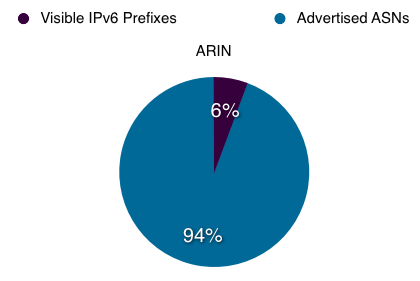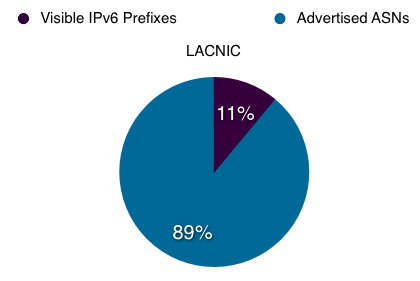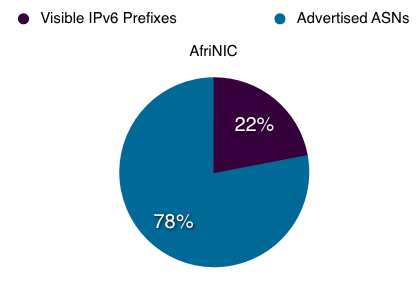


|
||
|
||
IPv6 is in the news because the mainstream media have started to pick up the fact that IPv4 will be fully allocated in the next two or three years. And IPv6 deployment is important if we want to keep the Internet growing sustainably.
So where is IPv6 deployment most evident? It’s a very difficult thing to measure. It is difficult to measure the amount of IPv6 traffic as so much of it is tunneled inside of IPv4. And anyway, tunneled traffic is probably from end users rather than ISPs, but we need ISPs to deploy IPv6 to allow the Internet to grow. So how can we see where ISPs are deploying IPv6 in their networks?
One possible measure of IPv6 deployment in ISPs is the number of IPv6 address blocks (prefixes) seen in the routing table in comparison with the number of autonomous systems (ASs - roughly equivalent to ISPs) in a region. Geoff Huston has a regional breakdown of advertised ASs on his website and the SixXS project has a regional breakdown of the IPv6 address blocks visible per region on its website.
AfriNIC, the Regional Internet Registry for Africa and parts of the Indian Ocean, has a higher proportion of networks in its region announcing IPv6 addresses than the others. Africa also has a smaller deployed base but IPv6’s size is designed to support exactly the kind of network growth that highly populated areas, like Africa and Asia will see as their deployed base grows in the next few years.
Proportion of ASs in RIPE NCC service region announcing IPv6 prefixes:

Proportion of ASs in APNIC service region announcing IPv6 prefixes:

Proportion of ASs in ARIN service region announcing IPv6 prefixes:

Proportion of ASs in LACNIC service region announcing IPv6 prefixes:

Proportion of ASs in AfriNIC service region announcing IPv6 prefixes:

Sponsored byDNIB.com

Sponsored byVerisign

Sponsored byVerisign

Sponsored byCSC

Sponsored byIPv4.Global

Sponsored byRadix

Sponsored byWhoisXML API
